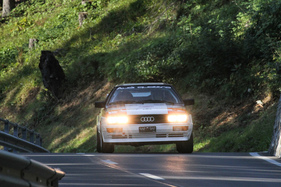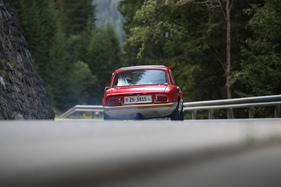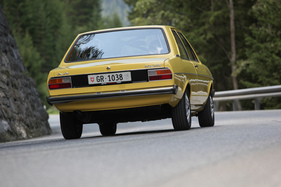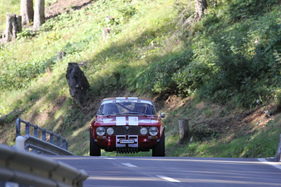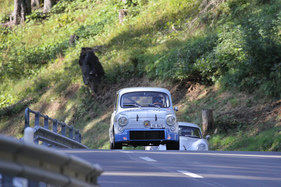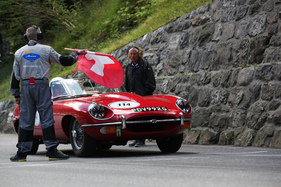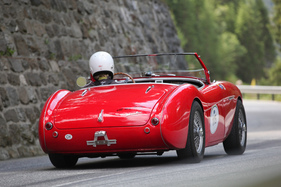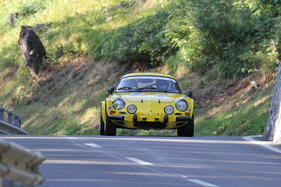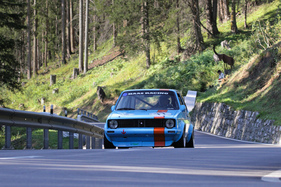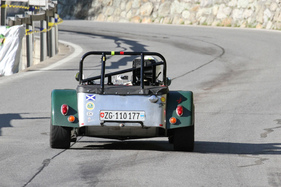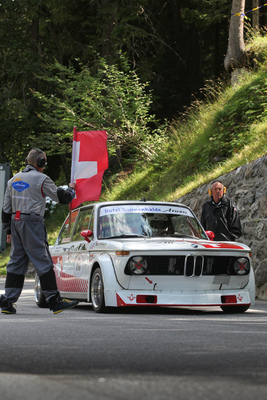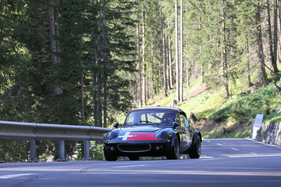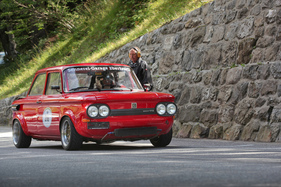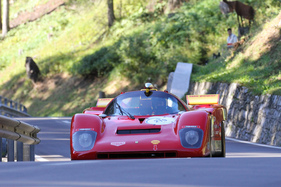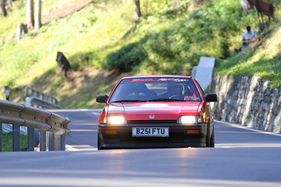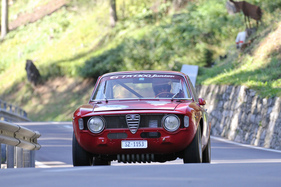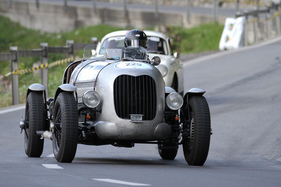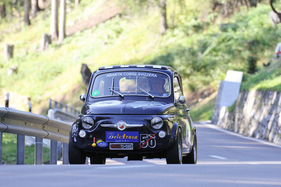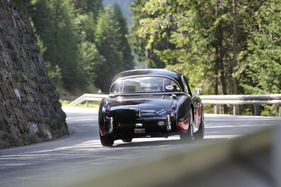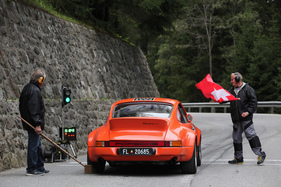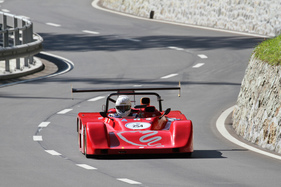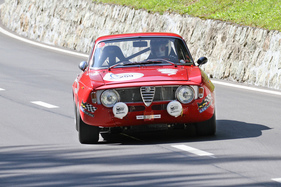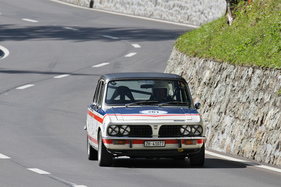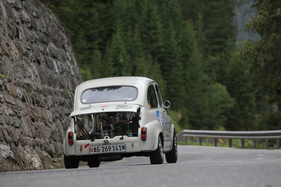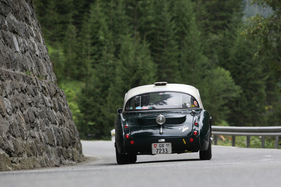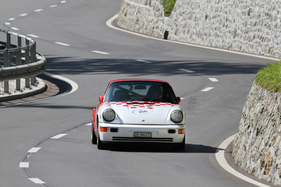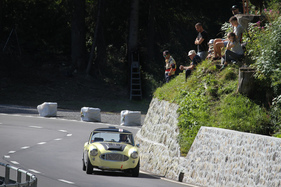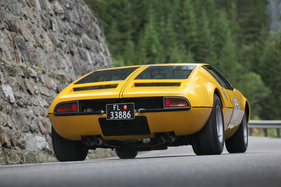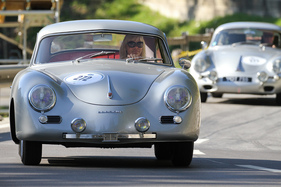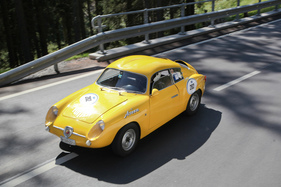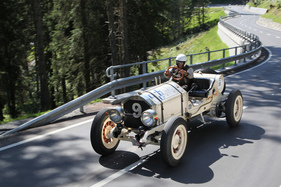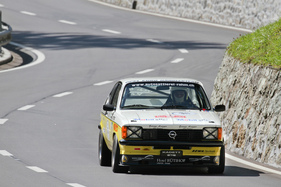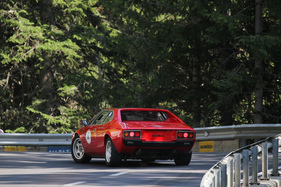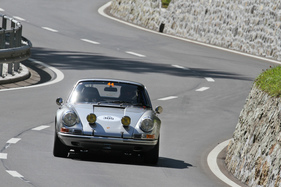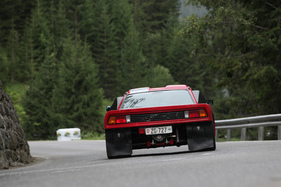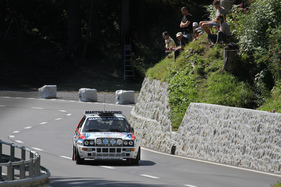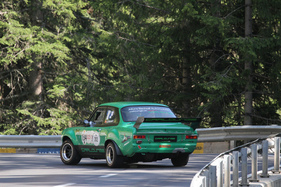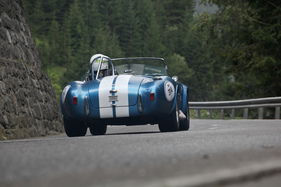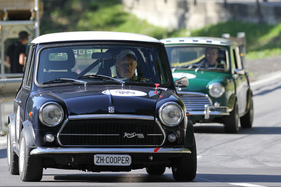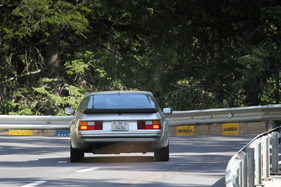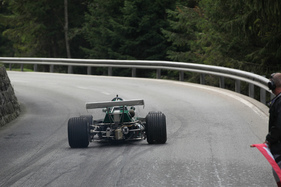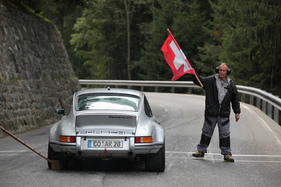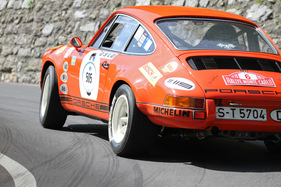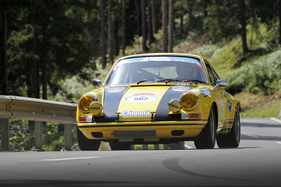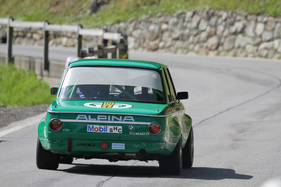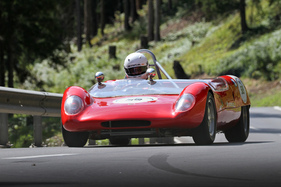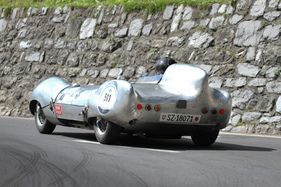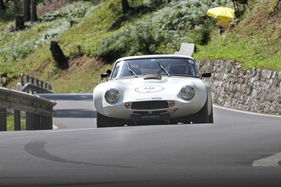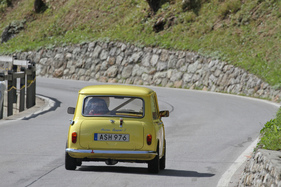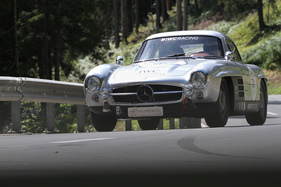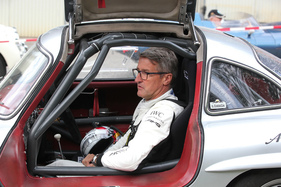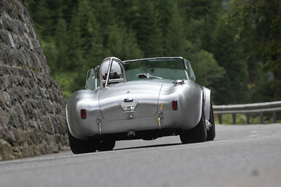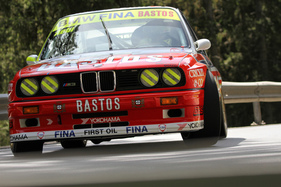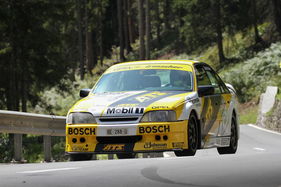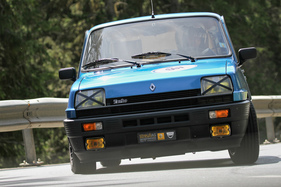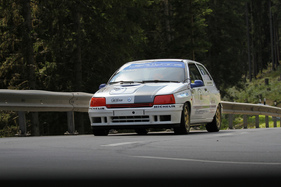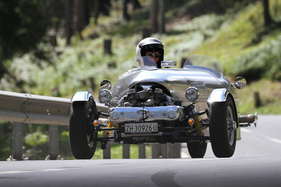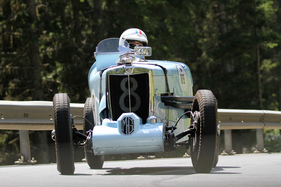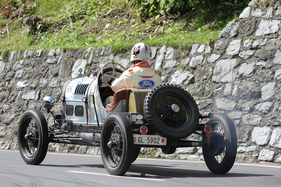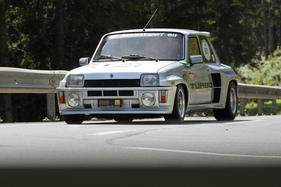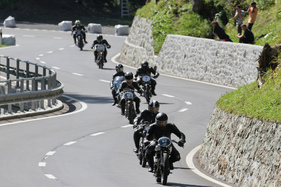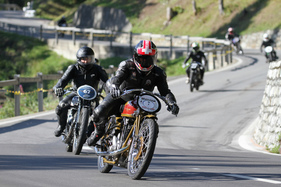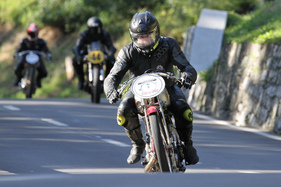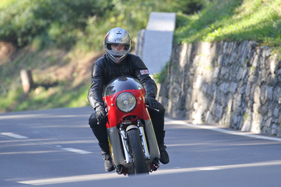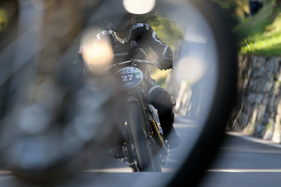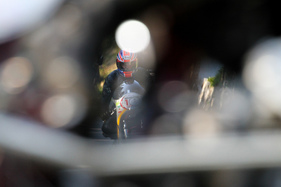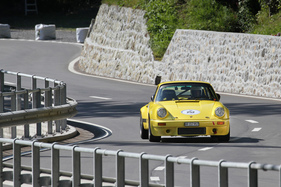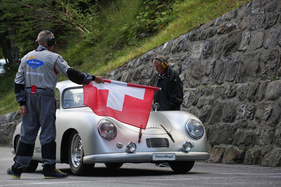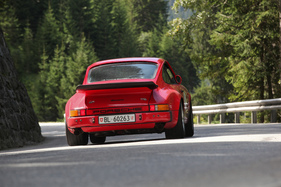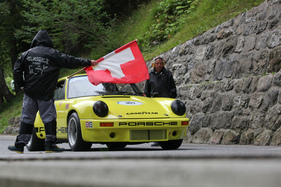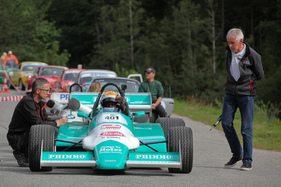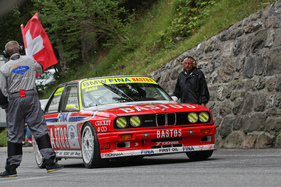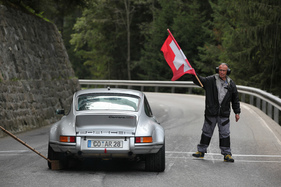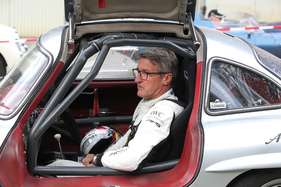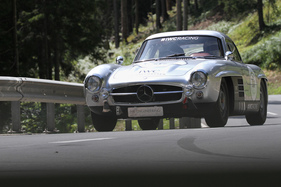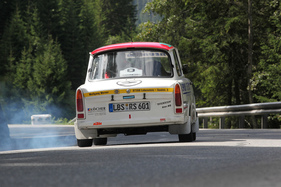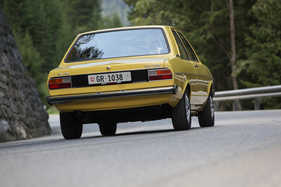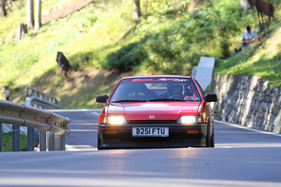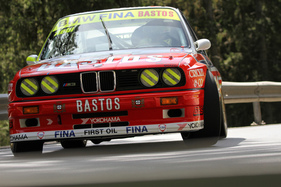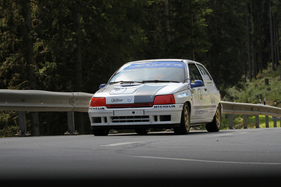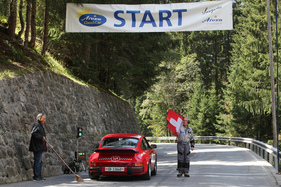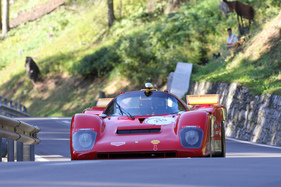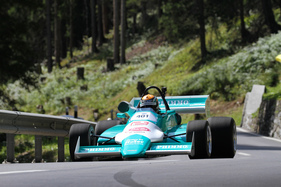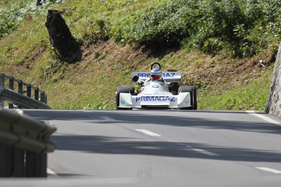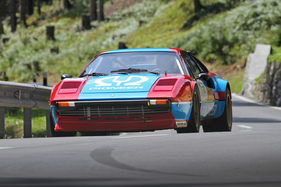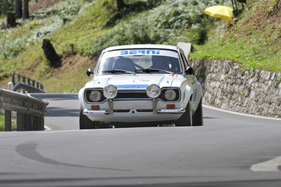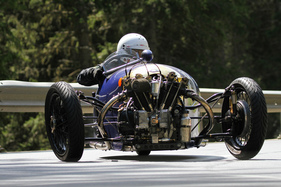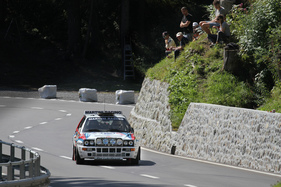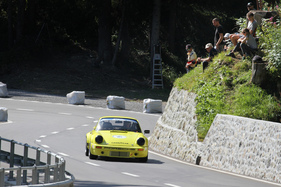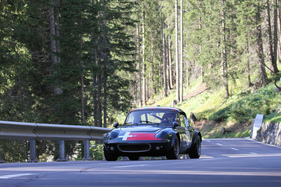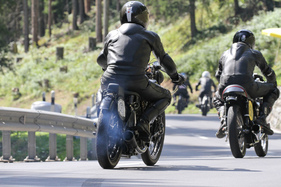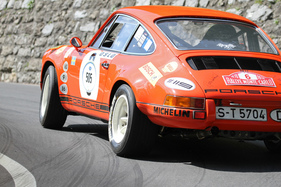The Arosa ClassicCar hill climb took place for the 15th time from August 30 to September 1, 2019 in front of 27,000 spectators. With a largely unchanged route between Langwies and Arosa, the biggest question was what the weather would be like. It was forecast to be fairly sunny, but the first drops of rain fell on Saturday afternoon, slowing down the second run of the race fields.
But it got really wet on Sunday afternoon, so that the last race of the Competition class had to be stopped by the race director after the pilots almost felt like they were in a boat as they entered the village of Arosa.
At least two of the four races were dry and those who were lucky enough to drive early managed to get through all six runs almost without using windshield wipers.
Bernd Schneider on the wrong track
Hill climbs are a completely new experience for the DTM series winner of the nineties and noughties. But at least he was provided with a car with a star by a Swiss watch company. However, the differences between the 300 SL and his DTM cars are huge, after all, in the German Racing Championship they drove with ABS and sequential gear changes.
Nevertheless, it was fun, explained a visibly relaxed Bernd Schneider. At most, he drives here at 80 percent, he doesn't have to prove anything to anyone.
However, Schneider is a racing driver, so it was certainly no coincidence that he watched a few YouTube videos of past mountain rides to get to know the route at least a little better.
"I would have to ride up there at least 20 more times before I would know the course to some extent," explained the German down at the start. And anyway, it was something completely different to what he was used to.
"The event is great," shared Schneider, "the people are very nice and you can feel that everyone here has gasoline in their blood."
He spoke and thundered up the next run. He didn't actually come close to the times of the second 300 SL, but the 80 percent figure was probably true.
The racing cardboard on the mountain
Bernd Schneider wasn't the only one in Arosa, of course. There was also Martin Sievers, who had brought a Trabant to the start together with his East German friends.
And it had it all, with over 60 hp, which gave the flyweight considerable performance. Although the engine was trimmed for stability and rally use, it also blew a cheerful song and a nice little smoke when the Leukoplast bomber roared up the hill.
Freshly restored
For some classic cars, the hill climb was also the premiere after restoration, such as for a yellow Audi 80 GTE.
The car (without the matt black hood) was probably not quite finished yet, but it was certainly good enough for fast hill climbs and the spectators were able to enjoy the rare pleasure of watching one of the early fast Ingolstadt cars.
Back to the beginnings with the CRX
Marcel Stucki started his car career with a Honda CRX. He wanted his car back and finally found it in the Netherlands with over 250,000 km on the clock.
A roll bar provided the necessary security, but the engine with its quarter of a million kilometers of mileage hardly needed any further attention and the car ran smoothly as it was.
Familiar and less familiar
Many of the Arosa starters were returning participants, which is a good testimony to the event. Accordingly, experienced spectators were also familiar with some of the cars that drove up the hill.
Every year, however, a few new cars are added, such as the BMW M3 with the large Bastos stickers in the demo class.
The two Renault small cars R5 and Clio were also welcome additions to the demo field.
The most strongly represented brand was not entirely unexpectedly Porsche, even though the former series winner Zumwinkel with its Carrera 6 has unfortunately not been back to Langwies for several years. Instead, the 911 and 356 models were represented in many variants and the 924/944 transaxle coupés were not missing either.
A feast for the eyes and ears was of course the Ferrari 512M from 1971, a car that you would actually expect to see at Le Mans rather than at a hill climb in the Grisons Alps.
New record for Thomas Amweg
Thomas Amweg, son of the Swiss mountain king Fredi Amweg, set a new track record in his Martini Formula 2 car.
It took him just 4 minutes and 6 seconds to complete the 7.3-kilometre race track with 76 bends and a difference in altitude of 422 meters. This results in an average speed of almost 110 km/h per hour, despite several hairpin bends and narrow passages. Of course, this performance meant that victory in the "Competition Formula" class was out of his reach.
Roger Moser lost around 20 seconds to Amweg in his Formula 2 Martini, which is several years older.
Ferrari 308 GTB almost as fast as the Formula cars
The winner's trophy in the "Competition" class went to Bruno Staub, who drove his Group 4 Ferrari 308 GTB up the slope almost as fast as the lightweight formula cars.
His best time was 4:33.67, which was just over 25 seconds slower than Amweg's fastest run.
Second place went to Urs Beck, who lost an average of just three seconds per run to Staub, no mean feat in a car that is several years older than the Ferrari.
Bernhard Diego took third place in a Ford Escort RS 2000.
Once again, the three-wheeled Morgan cars from the 1920s were breathtaking to watch, although they can still compete with much younger rivals in terms of times.
Schawalder as the king of regularity
It takes a lot out of a 1917 La France to get up the mountain from Langwies to Arosa. There's no time to look at your watch.
And yet Ruedi Schwalder managed to complete two runs with a time difference of just 0.02 seconds. He was probably the most surprised of all and was crowned the winner of the "Arosa Classic Trophy" class as the Arosa frequent starter.
In the "Arosa Sport Trophy" class, Andreas Portmann won on a wild-looking 1995 Lancia Delta HF Integrale with a difference of 0.04 between the two selected running times.
Reto Toscan came second in a Porsche 911 Carrera RS 3.0 IROC.
The ladies' prize went to Martina Garovi in a Lotus Elan S2, which made Swiss racing history with her father.
With a time difference of 0.16 seconds, she came fifth in the "Arosa Classic Trophy" class.
And the motorcycles and cabs
In addition to the races, which took place on Saturday and Sunday, there were two practice runs on Friday and a parade through Arosa on Thursday evening.
Between the races, the crowds of motorcyclists impressed the spectators and anyone who wanted to experience for themselves what 7.3 kilometers with a racing driver at their side feels like could sit in a fast Audi with Marcel Fässler or Marco Werner, for example, and have their stomach nerves tested.
So there was hardly any time for boredom, especially as the track announcers knew how to tell many exciting stories from over 100 years of motor racing. The only thing that really wasn't needed was the downpour at the end.





